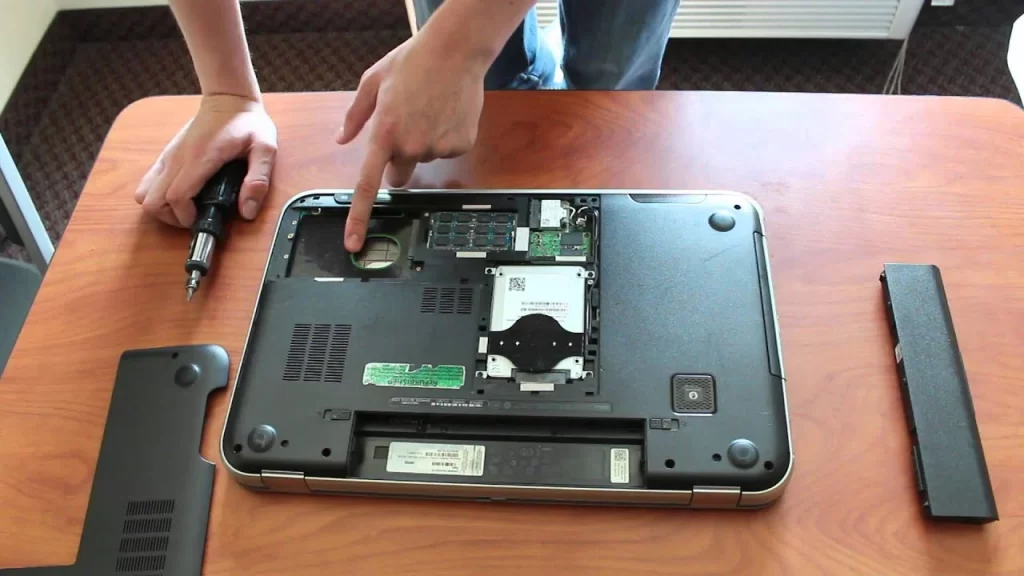You can never be sure of an accident; your PC may fall into the water and then stop turning on. Don’t panic, here’s what to do.
The first thing you need to know is that when your PC takes on water, time is against you. The above solutions must be implemented quickly and carefully.
| Norton Secure VPN 2023 for up to 5 Devices | |
 | 19,99 $ |
1. Start by unplugging the computer
Whether it’s a laptop or a desktop, turn it off as soon as possible. This does not mean turning it off in the conventional way, but rather pressing and holding the power button to turn it off immediately.
If it is a fixed computer, you should unplug the power cable as soon as possible.
If you have a laptop instead, remove the battery if possible.
By disconnecting the power to your PC as soon as possible, you avoid short circuits that could kill your device.
When you turn off the power, the electricity stops flowing through the circuits, but there is still water. Problems are not yet far away.
2. Dry the PC

Drying the computer is very important. But how do you dry a computer effectively?
To start with, take a towel and soak up as much water as possible. Don’t wipe it off. Just place the towel very gently on the water and press lightly to absorb the water. Dab and blot, the aim being to absorb the water, not to spill it.
Once you have taken in enough water with the towel, leave the computer in a dry environment for at least 48 hours.
If you have not already done so, it is advisable to open the case, but do so gently so that any water that has seeped in cannot spill out.
The advantage of opening the case is that you can see how wet everything is. It will also allow you to dry everything well.
3. Should I put rice in a computer that has got water inside?
No, don’t put any rice in it, as people often say. In fact, how can you put a whole computer in rice?
Rice is great at absorbing moisture from the air, so you can put it in a salt shaker to keep the salt from clumping. It really works.
The problem with waterlogged electronics is that you’re not fighting moisture in the air, but actual puddles.
The only way the rice could absorb this water is if it was in direct contact with water. This would require you to open the PC and then cover it with rice.
This is not a reasonable solution because the rice could damage important components; especially in a laptop.
Do not air dry.
After at least 48 hours, once the drying is finished, try to switch on the PC. If you have turned off your computer in time, everything should work fine.
What if the PC won’t turn on?
At this stage it is difficult to know which component is damaged. It is tempting to say that the power supply is burnt out, because the PC does not turn on at all.
1.Test the PC components

To be sure, you need to test the computer’s components, starting with the power supply.
If you have the tools to do this, go for it, but it is strongly advised at this stage to take your device to a qualified technician. He will know much better what to do.
As mentioned above, the first test should be on the power supply and the system. So use a power tester to do this.
Try to check that the power button is receiving the necessary electrical power to turn on the PC. Also check that it is sending power to the motherboard when it is pressed.
If the power supply doesn’t work, chances are it’s the only damaged component. But if it does work, it’s even more complicated because you’ll have to test the other components to see which one is damaged.
The main components to test are: the processor, the RAM, the hard disk, the USB sockets, the expansion cards and the VENTIRAD.
If one of these components is not powered, the motherboard is probably damaged. We have mentioned the most important components to test, but feel free to test all the others to be sure.
2. Replace damaged components
At this point, you should have a total estimate of what you will need to buy to repair the PC. Don’t go on a distress shopping spree. It could be that your hard drive is still in good condition. This should be the case as these are robust components. Take it out and put it in a computer to see if it still works. If it does, at least you will have saved all your data.
Replacing components in a PC can be expensive; especially if it’s a laptop. Although you can’t be sure that the computer will work for long; water can cause hidden damage in the long run. This is why changing your computer is better than a massive replacement of components.
As mentioned above, remove your hard drive and insert it into another PC.

3. Take the PC to a professional
Unless you are a professional yourself, you should go to one as soon as your computer is switched off and dry. They will know better than you how to deal with it. Water damage can be difficult to trace. You should leave this task to a professional if you are serious about recovering the PC.
Finally, note that the situation is even more delicate if your water contained other products. An expert will know what to do.
Also check :
